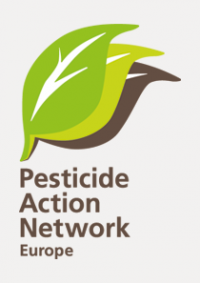Consumers are advised to avoid exposure to endocrine disrupting pesticides (EDPs), which can be found as pesticide residues in conventionally-grown fruit and vegetables. Due to their harmful effects on human health, the EU banned EDPs twelve years ago. However, they are still abundantly present in food and other items sold in (super)markets.
In order to help consumers make informed choices, PAN Europe publishes today a Consumer Guide with practical tips and useful information to help av oid exposure to these harmful pesticide residues.
Some fruit and vegetables like potatoes, cereals, olives and avocados are on PAN’s ‘green list’ of products that are generally without EDP residues, while products like cherries, peaches, strawberries and pears are on PAN’s red list and should be avoided entirely. An intermediate ‘orange’ list with, among others, grapes, apples and blueberries should be substituted if possible. The red list products can be substituted by green list products or by organic products. The best way to avoid EDPs and protect your health is to buy organic products exclusively. For pregnant women and the vulnerable foetus, organic consumption is the only safe solution.
Several products like cherries and pears can contain up to 7 EDPs at the same time, and peaches can contain as many as 9. The combined effects of these cocktails of EDPs can increase the human health risks significantly.
The levels of EDPs also differ from country to country, following each country’s production peculiarities. For those consumers looking for detailed advice, the Guide also provides information on the origin country of production and the level of EDPs in the products of highest contamination.
EDPs are substances that mimic the natural hormones present in the human body, and can disturb its functioning. No safe dose of these EDPs is demonstrated experimentally. EDPs likely contribute to the currently staggeringly high rates of breast and prostate cancer, to reduced male fertility and to brain damage of the foetus that could manifest in later life as reduced motility or IQ.
PAN Europe selected the EDPs that were identified by the European institute JRC and collected the pesticide residue data from the latest EFSA pesticide monitoring report.
Contact: Hans Muilerman, Chemicals Coordinator, PAN Europe, hans [at] pan-europe.info, +31 655807255
